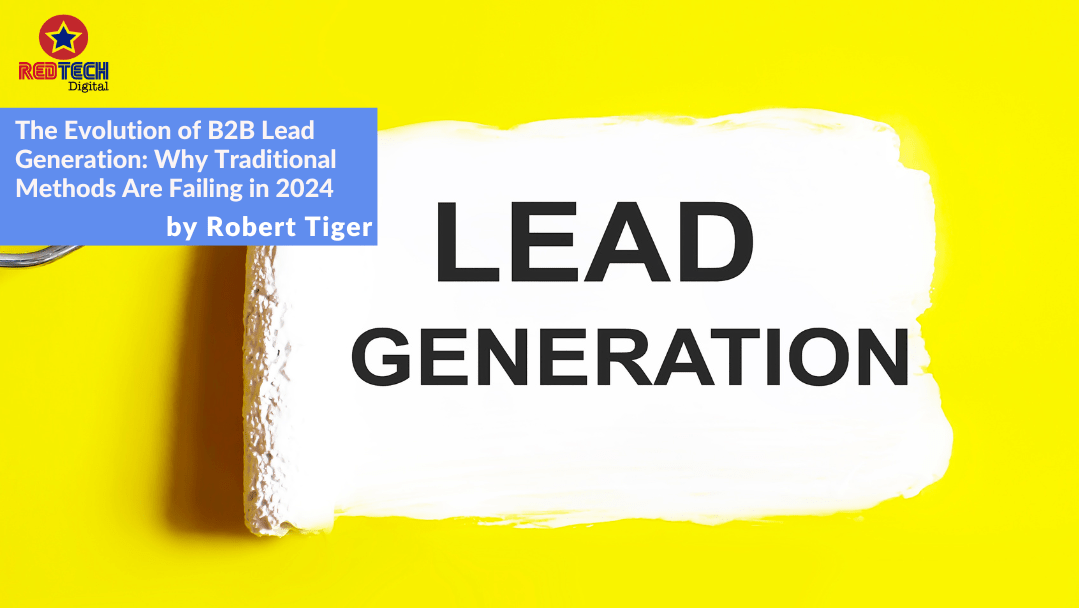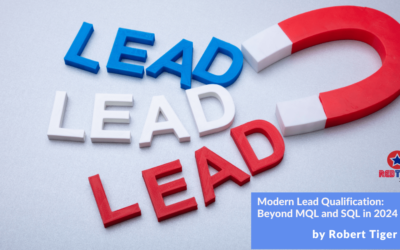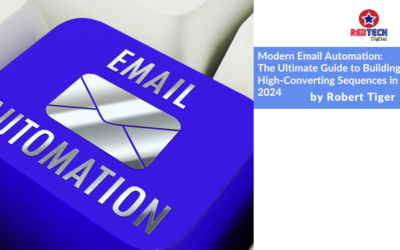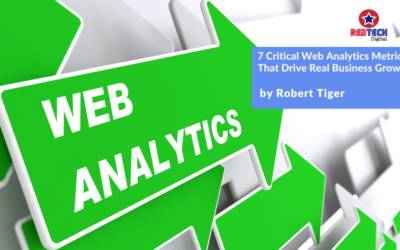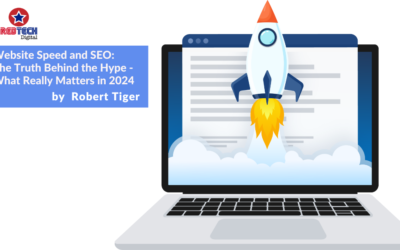Modern B2B lead generation is undergoing a dramatic transformation in 2024, forcing companies to rethink their entire approach to generating and qualifying leads. In today’s rapidly evolving B2B landscape, traditional lead generation strategies are becoming increasingly ineffective. Consequently, marketing teams are finding themselves at a crossroads, struggling to adapt to the new reality of buyer behavior. Furthermore, our recent analysis reveals that only 13% of traditional Marketing Qualified Leads (MQLs) contribute to actual revenue, highlighting the urgent need for a paradigm shift in B2B lead generation strategies.
The Decline of Traditional MQLs
First and foremost, it’s crucial to understand why conventional lead generation methods are falling short. Moreover, research across 150 B2B companies has uncovered a startling truth: while companies continue to chase MQLs, approximately 60% of actual customers never met traditional MQL criteria. Therefore, this disconnect signals a fundamental flaw in how we approach lead qualification.
The Revenue Signal Framework: A Modern Approach
As a result of these challenges, forward-thinking companies are now adopting what experts call the “Revenue Signal Framework.” Subsequently, this innovative approach shifts focus from basic marketing qualified leads to Revenue Qualified Opportunities (RQOs). Additionally, this framework incorporates several key components:
Key Components of the Revenue Signal Framework:
1. Buying Intent Signals
2. Account Engagement Patterns
3. Decision Maker Involvement
4. Problem-Solution Fit
5. Budget Timing Indicators
The Triple Intent Stack: Understanding Buyer Behavior
Meanwhile, successful lead generation in 2024 requires a sophisticated understanding of intent data. Hence, the “Triple Intent Stack” approach has emerged as a powerful solution. Furthermore, this methodology combines three critical data sources:
First-Party Intent
-
Website behavior patterns
-
Content interaction metrics
-
Tool and calculator usage
Second-Party Intent
-
Partner network activity
-
Industry forum engagement
-
Review site participation
Third-Party Intent
-
Technographic changes
-
Hiring patterns
-
Investment signals
Content Strategy: The Value Exchange Model
In addition to intent tracking, content strategy has undergone a significant transformation. Consequently, the old approach of gating all content has given way to a more nuanced “strategic value exchange” model. Moreover, this new approach categorizes content using the Content Value Matrix:
High-Value, Strategic Content (Gated)
-
Industry research reports
-
Custom benchmarking tools
-
ROI calculators
-
Interactive assessments
Foundational Content (Ungated)
-
How-to guides
-
Checklists
-
Templates
-
Basic whitepapers
The RICE Qualification Framework
Subsequently, the traditional BANT qualification framework has evolved into the more effective RICE model:
-
Readiness: Active problem-solving status
-
Impact: Pain point significance
-
Capacity: Implementation resources
-
Engagement: Stakeholder involvement
Implementing Adaptive Nurture Paths
However, the evolution of lead nurturing has been equally dramatic. Therefore, modern B2B companies are now implementing Adaptive Nurture Paths that adjust based on:
1. Engagement patterns
2. Buying stage signals
3. Stakeholder involvement
4. Competitive positioning

Over 75% of Marketers Use Web Analytics

Analytics Boosts ROI by 20%

90% of Businesses See Improved Customer Insights

Web Analytics Increases Conversion Rates by 50%
Measuring Success: The Attribution Matrix Model
Finally, measuring success in modern lead generation requires a more sophisticated approach. Thus, the Attribution Matrix Model has emerged as a crucial tool for understanding multi-touch engagement. In fact, companies implementing this model have seen:
-
48% of initial awareness driven by LinkedIn
-
62% of deep research coming from direct search
-
71% of final decisions influenced by email nurture
Understanding Multi-Touch Attribution
Moreover, successful B2B companies are now recognizing that the buyer’s journey is rarely linear. Subsequently, this has led to the development of sophisticated tracking mechanisms that capture various touchpoints throughout the customer journey. Furthermore, our research indicates that leads engaging across multiple channels are 3.2 times more likely to convert into paying customers.
Attribution Metrics and Analysis
To effectively measure B2B lead generation success, companies must track various attribution metrics across different channels. This data-driven approach helps optimize lead generation strategies and improve ROI. Additionally, understanding these metrics helps businesses refine their lead generation tactics over time.
Key Engagement Patterns
Additionally, high-value engagement patterns typically include:
1. Initial thought leadership exposure (often through social media)
2. Website exploration and case study review
3. Educational content consumption (webinars, whitepapers)
4. Product-specific research
5. Pricing and ROI evaluatio
Personalization Strategies for Higher Conversion
Furthermore, modern B2B lead generation requires sophisticated personalization strategies. However, it’s essential to avoid the common pitfall of over-personalization, which can lead to generic and ineffective messaging. Therefore, successful companies are implementing what we call “Impact Personalization.”
Elements of Impact Personalization
1. Buying Stage Alignment
-
-
Content tailored to specific stages of the buying journey
-
Custom CTAs based on engagement level
-
Stage-appropriate social proof
-
2. Industry-Specific Pain Points
-
-
Targeted case studies
-
Industry-specific ROI calculations
-
Vertical-focused solution positioning
-
3. Technical Requirement Mapping
-
-
Integration capabilities
-
Implementation requirements
-
Technical documentation
-
1. Budget Cycle Consideration
-
-
Procurement process alignment
-
Budget planning tools
-
Financial impact analysis
-
The Action Signal Framework
Meanwhile, the Action Signal Framework has emerged as a crucial tool for operationalizing lead generation data. Subsequently, this framework helps companies automate responses while maintaining personalization.
Framework Components
The Action Signal Framework consists of multiple components that work together to create an effective lead generation system:
-
Signal tracking mechanisms
-
Response automation rules
-
Personalization algorithms
-
Engagement scoring models
Signal Types and Triggers
Different signal combinations trigger specific responses based on prospect behavior and characteristics:
1. High Intent + Budget Holder Engagement
-
-
Immediate sales outreach
-
Executive-level content delivery
-
Custom ROI analysis
-
2. Technical Research + No Budget Signals
-
-
ROI-focused nurture sequence
-
Technical validation materials
-
Implementation planning resources
-
Multi-Stakeholder Engagement
When multiple stakeholders are involved, the framework adapts to manage complex buying committees:
1. Multiple Stakeholders + Competitive Research
-
-
Strategic account planning
-
Competitive differentiation content
-
Multi-stakeholder engagement strategy
-
Implementation Best Practices
Subsequently, implementing these modern lead generation frameworks requires careful planning and execution. Therefore, companies should follow these best practices:
Technology Stack Considerations
1. CRM Integration
-
-
Real-time data synchronization
-
Custom field mapping
-
Automated workflow triggers
-
Performance monitoring
-
2. Marketing Automation Requirements
-
-
Multi-channel campaign management
-
Advanced segmentation capabilities
-
Behavioral tracking
-
A/B testing functionality
-
3. Analytics and Reporting
-
-
Custom dashboard creation
-
Revenue attribution modeling
-
Predictive analytics
-
ROI tracking
-
Optimizing Channel Performance
In addition to framework implementation, channel optimization plays a crucial role in modern lead generation. Hence, successful companies are focusing on:
Channel-Specific Strategies
1. LinkedIn Optimization
-
-
Thought leadership content
-
Employee advocacy programs
-
Industry-specific targeting
-
Interactive content promotion
-
2. Direct Search Performance
-
-
Technical SEO optimization
-
Intent-based keyword targeting
-
Rich snippet optimization
-
User experience enhancement
-
3. Email Nurture Excellence
-
-
Behavioral triggering
-
Content personalization
-
Engagement scoring
-
Multi-threaded conversations
-
Change Management and Team Alignment
Moreover, successful implementation requires strong change management practices. Hence, organizations must evolve their B2B lead generation approach through proper team alignment. Organizations should focus on:
Training and Skill Development
1. Team Training and Development
-
-
Framework understanding
-
Tool proficiency
-
Process alignment
-
Performance metrics
-
Cross-Team Integration
2. Cross-Functional Collaboration
-
-
Sales and marketing alignment
-
Regular performance reviews
-
Feedback loops
-
Success metrics
-
Performance Monitoring
-
Regular lead generation metrics review
-
KPI tracking and optimization
-
Continuous improvement processes
-
Team performance assessment
Conclusion: The Future of B2B Lead Generation
In conclusion, successful B2B lead generation in 2024 demands a complete reimagining of traditional approaches. Above all, companies must focus on identifying and acting on revenue signals early in the buying journey. Therefore, by implementing these modern frameworks and strategies, organizations can significantly improve their lead-to-revenue conversion rates and build more effective marketing operations.
Furthermore, the success of modern lead generation relies heavily on the ability to adapt and evolve with changing buyer behaviors. Consequently, companies that embrace these new frameworks and maintain flexibility in their approach will be best positioned for success in the evolving B2B landscape.
Key Takeaways
1. Traditional MQL-based approaches are becoming obsolete
2.Revenue Signal Framework provides a more accurate picture of lead quality
3. Multi-touch attribution is crucial for understanding the complete buyer journey
4. Personalization must be strategic and impact-focused
5. Implementation success requires both technical and organizational alignment
Ready to transform your lead generation strategy? Contact our team of experts today to learn how we can help you implement these cutting-edge frameworks and drive better results for your business. Additionally, download our comprehensive guide to Revenue Signal Framework implementation to get started on your transformation journey.
Key Features of Web Analytics Tools
Essential Analytics Features for Marketers
Real-Time Data Tracking
Customizable Dashboards
Advanced Segmentation
Comprehensive Reporting
Understanding Web Analytics
The Role of Web Analytics in Digital Marketing
Explore Our Latest Insights on Digital Marketing
Modern Lead Qualification: Beyond MQL and SQL in 2024
Lead qualification in B2B marketing has reached a critical turning point. Traditional lead qualification processes and frameworks are becoming increasingly obsolete in today's digital landscape. As business-to-business lead qualification evolves, organizations must...
Modern Email Automation: The Ultimate Guide to Building High-Converting Sequences in 2024
Modern email automation strategies 2024 are revolutionizing the way businesses connect with their customers. Email automation remains a cornerstone of digital marketing, yet surprisingly, most businesses are stuck in outdated practices. In fact, recent data reveals...
7 Critical Web Analytics Metrics That Drive Real Business Growth
In today's digital landscape, businesses need to focus on critical web analytics metrics that drive real business growth rather than surface-level data points. Moreover, while traditional metrics like pageviews have long been the go-to measurement for website success,...
Marketing Automation in 2024: Debunking Myths and Revealing What Actually Works
Marketing automation has undeniably transformed the digital landscape. However, many businesses still struggle to separate fact from fiction when it comes to implementing these powerful tools. Let’s explore the reality behind common marketing automation myths and...
Performance Max vs. Traditional Google Ads: The Ultimate Guide for 2024
In the ever-evolving landscape of digital advertising, marketers are increasingly faced with a crucial decision: should they stick with traditional Google Ads campaigns or embrace the AI-driven Performance Max? Furthermore, this choice has become even more pressing as...
Website Speed and SEO: The Truth Behind the Hype – What Really Matters in 2024
In the ever-evolving world of SEO, website speed has become something of a hot topic. However, many businesses are left wondering whether the substantial investments in speed optimization are truly worth it. Based on recent insights from Apex Digital's Technical SEO...

